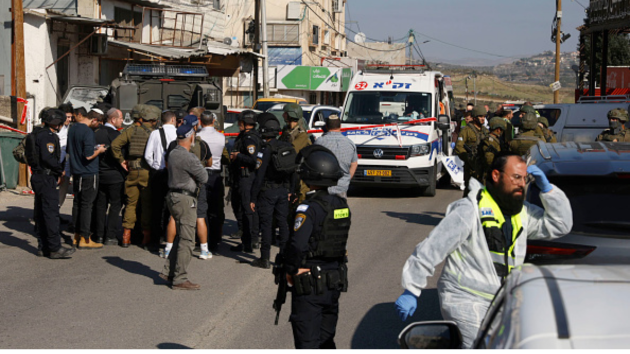Humanitarian crisis for food insecurity, lack of water supply about to begin in Gaza, experts say
Written by ABC Audio ALL RIGHTS RESERVED on October 13, 2023
(NEW YORK) — An already precarious situation regarding food and water supplies for the residents of Gaza has exacerbated into a humanitarian crisis due to the ongoing conflict between Hamas and Israel, experts told ABC News.
The horrors civilians are facing as a result of fighting between Hamas, a terrorist organization that is based in Gaza, and Israel extend far beyond the immediate bloodshed.
Days after Hamas launched a surprise terrorist attack on Israel, experts on war and food insecurity are concerned that the fighting will lead to widespread suffering for civilians, especially those living in the Gaza Strip, one of the most densely populated regions in the world.
As the fighting continues and borders remain closed, residents in Gaza are expected to run out of food, potable water and essential supplies in a matter of weeks, Shada Moghraby, spokesperson for the World Food Programme’s New York office, told ABC News.
This is why food and water will be so scarce in the region going forward, according to the experts:
Gaza was facing a food security, water crisis before the most recent conflict began
There was already a humanitarian crisis brewing in the Gaza Strip before the fighting commenced.
With about 2.4 million people packed into just 140 square miles, residents living in the Gaza Strip, wedged between Israel, Egypt and the Mediterranean Sea, were experiencing threats to their food and water supply even before Hamas’ surprise terrorist attack on Israel led to war.
Thousands of years of conflict in the region has also degraded the land, leaving “reverberating environmental effects” and making it nearly impossible for Gaza to produce its own food supply, Doug Weir, research and policy director of The Conflict and Environment Observatory, told ABC News. The recurring periods of violence have led to high levels of disruption to infrastructure, particularly water and sanitation, as well as power plants, Weir said.
“You have this highly degraded strip of land trying to sustain a very high, very dense population,” he said. “That’s kind of the situation that population has been living in, to this day.”
There is no surface water — lakes or rivers — to draw from in the region, David Gampe, a geographer and climate scientist at the Ludwig Maximilian University in Munich, Germany, told ABC News. The only resource to extract water from is the groundwater, Gampe said.
Therefore, the aquifer supplying water to the territory is over-extracted. Only about 4% of the water extracted from the aquifer is actually potable, Weir said.
The lack of an adequate supply of clean water has been the focus of the argument on the actual habitability of Gaza for years, Weir said. Nearly all of the drinking water in the territory is bottled, Gampe said.
About 80% of the population in Gaza was in need of humanitarian aid before the bombings began days ago, Samer Abdeljaber, regional director for the World Food Programme, told ABC News.
“The situation was already dire. and now these escalations make things really, very difficult on those people who are already suffering from food insecurity,” Moghraby said.
The economic consequences of the constant conflict have also taken a toll on the region, making it difficult for it to invest in advancements in infrastructure, Moghraby said.
Borders are now even more restricted
The vast majority of the food supply is “highly dependent” on imports, Weir said. This is making the blockade around the territory even more injurious for the people stuck inside.
Earlier this week, Israel stopped entry of food, water, fuel and medicine into Gaza. The sole remaining access from Egypt was shut down on Tuesday.
There is barely any power in Gaza, as its sole power plant has run out of fuel as a result of the blockade, the Gaza Ministry of Energy said on Wednesday.
As soon as the power is switched off, infrastructure — including water treatment and transit — can’t work effectively, Weir said.
In 2020, the U.N. Environment Programme released a status report for Gaza and the West Bank, defining the consequences of the intricate political process necessary to gain access to the region.
Within the borders, humanitarian aid groups are running out of food items, as are markets, Abdeljaber said, adding that the unfolding situation is “devastating at the moment.”
The World Food Programme is seeking a humanitarian corridor to allow supplies into Gaza, Moghraby said.
“We’re doing everything we can to make sure that we are reaching the people who seek shelter in the U.N. designated shelters,” he said.
Bombings in Gaza are making the situation even more dire
The damage to the infrastructure inside Gaza is impeding the food production and distribution networks, Moghraby said.
Bakeries in Gaza have told the WFP that they are running out of fuel, electricity and wheat flour and will soon be unable to provide the organization with bread, Abdeljaber said.
But the supplies of food and water are running out, and fast.
There are limited stocks of food items inside Gaza, which makes the approval of a humanitarian corridor into the territory even more essential.
Those who manage to get food are having to leave their homes and seek shelter from the assaults from the Israeli Defense Forces, a “very risky” endeavor, Abdeljaber said.
WFP is also having difficulties in coordinating its movements to make sure that the frontline humanitarian workers remain safe. Nearly a dozen colleagues have lost their lives, Abdeljaber said.
Right after the bombing in Gaza began, the World Food Programme provided 73,000 people with ready-to-eat canned food, as well as fresh bread from bakeries within Gaza, Abdeljaber said. The next day, that number jumped to 175,000 people, and on Thursday, the WFP is expected to provide meals to up to 205,000 people, Abdeljaber said.
The organization is planning to scale its response to provide more than 800,000 people in Gaza and the West Bank with food, water and essential supplies like cash, Moghraby said.
The WFP has experienced setbacks in funding in the past year, Moghraby said.
In June, the organization was forced to suspend about 150,000 residents of Gaza from assistance due to lack of funding, Abdeljaber said. The funding typically comes from governments and the private sector, Moghraby said. However, the organization does not work with the governments represented by the de facto authorities on the ground.
Before the crisis began, WFP was in need of about $32 million in additional funding to meet its goal. Now, the organization is seeking an additional $17 million just to be able to source the required amount of food for the next four weeks, Abdeljaber said.
Climate change is also threatening the region
Food insecurity and water supply issues are expected to persist in the long term, and not just because of the conflict.
Climate change is intensifying existing environmental problems in the region, including increased water stress, a study published by the National Library of Medicine last year found.
The Mediterranean climate leads to wet winters and dry summers, in which there is virtually no precipitation over the hottest months of the year, said Gampe, one of the authors of the 2022 study.
A rise in temperature is going to exacerbate the water supply in the region by leading to increased evaporation within the aquifer.
With up to 25% less precipitation in the winter months, when the water recharge is supposed to occur, the aquifer could soon run dry of potable water, the research shows.
“The groundwater exploitation is already exceeding the recharge,” he said.
Inadequate water supplies often have cascading consequences, including indirect health effects on populations, such as an uptick in diarrhea cases in young children, Gampe said.
“That will severely affect health and cause a massive problem in the region,” he said.
Copyright © 2023, ABC Audio. All rights reserved.





